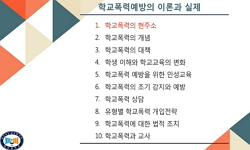Among various theoretical frames of criminal law, the justification theory would probably be rated towards perfection, not only in terms of structure but also in terms of its contents. Justifiable act of article 20, self defense of article 21, act of ...
http://chineseinput.net/에서 pinyin(병음)방식으로 중국어를 변환할 수 있습니다.
변환된 중국어를 복사하여 사용하시면 됩니다.
- 中文 을 입력하시려면 zhongwen을 입력하시고 space를누르시면됩니다.
- 北京 을 입력하시려면 beijing을 입력하시고 space를 누르시면 됩니다.
https://www.riss.kr/link?id=A75517709
- 저자
- 발행기관
- 학술지명
- 권호사항
-
발행연도
2007
-
작성언어
-
-
주제어
정당방위 ; Self Defense ; 긴급피난 ; Act of Necessity ; 정당행위 ; Justifiable Act ; 사회상규 ; Socially Accepted Rules ; 소극적 방어행위 ; Passive Defense ; 사회적 상당성 ; Social Reasonability ; 위법성조각사유 ; Types of Justification ; 이론과 실무 ; Theory and Practice ; 초법규성 ; Trans-Legality ; 법치국가원칙 ; the Rul
-
KDC
360.05
-
등재정보
KCI등재후보
-
자료형태
학술저널
-
수록면
33-59(27쪽)
-
KCI 피인용횟수
17
- 제공처
- 소장기관
-
0
상세조회 -
0
다운로드
부가정보
다국어 초록 (Multilingual Abstract)
Among various theoretical frames of criminal law, the justification theory would probably be rated towards perfection, not only in terms of structure but also in terms of its contents. Justifiable act of article 20, self defense of article 21, act of necessity of article 22 are among the five categories of the types of justification. Although these five share the ultimate conclusion that they are being justified, each of them has got its unique process in drawing that conclusion. Hence, it is quite significant in both theory and practice, to study the subtle differences between each type of justification. Act of necessity is, along with self defense, certainly the most significant one among numerous types of justification. However, in spite of its theoretical abstruseness and complexity, the bare reality over juridical applications of act of necessity is more or less miserable. The reason why I have used the term so drastic as miserable, is because its usage in legal practice is desperately rare. There had been hardly any other court case except one which had quoted the article that mentions act of necessity. For every academic work is supposed to aim at the betterment of human life, criminal law theory cannot be something exceptional. In other words, what we call ``theory for the theory`` would end up being understood meaningless in the academic fields of law. Interestingly enough, we may perceive the same situation in the practice of self defense. Just like the case of act of necessity, no one would doubt the academical significance of the theory of self-defense. It is placed in the very beginning of vast majority of criminal law textbooks. However, it seems that the Supreme Court had hardly ever recognised self defense seldom in the practice. This is the point where my dubious question on the reality of self defense had arose. Considering the ever-so-splendid theoretical pavement, my scholarly curiosity could not help of being aroused, facing such humble reality of self defense. Then we may be confronted with the following questions: had the original self defense cases ran away to somewhere? If they did, where are they hidden, indeed? In addition, what is the purpose of hiding, and are those purposes legitimate enough? If such enormous disparation between the theory and practice cause paradoxic situation, what could be done to solve the paradox? Efforts of solving these questions are what this short essay is ultimately aimed at. I doubtlessly believe that such efforts will in turn contribute to fix and to repair the structure of justification theory. Moreover, after reading the last page of this thesis, I hope the readers could get a tip on what sort of criminal law concepts should be avoided of being used in practice. Concepts such as social ethics, socially accepted rules, or general thoughts on justice would be among the typical examples of such.
참고문헌 (Reference)
1 "형법 제20조의 사회상규규정의 입법연혁과 사회상규의 의미" (20) : 2003
2 "형법 제20조의 ‘사회상규에 위배되지 아니하는 행위’의 재조명" 4 (4): 2002
3 "형법 제20조의 ‘사회상규에 위배되지 아니하는 행위’에 관한 고찰" (19) : 2003
4 "형법 제20조 사회상규 규정의 성립경위" 47 (47): 2006
5 "한국형법학(총론강의)" 숙명여자대학교 출판부 2002
6 "판례중심 형법총각론" 법원사 2006
7 "판례백선 형법총론" 경세원 1999
8 "정당화사유의 일반원리와 사회상규" 18 (18): 2006
9 "생명공학시대의 법과 윤리" 이화여자대학교 출판부 2000
10 "기대가능성이론의 발전과 우리 형법 50년" (18) : 2002
1 "형법 제20조의 사회상규규정의 입법연혁과 사회상규의 의미" (20) : 2003
2 "형법 제20조의 ‘사회상규에 위배되지 아니하는 행위’의 재조명" 4 (4): 2002
3 "형법 제20조의 ‘사회상규에 위배되지 아니하는 행위’에 관한 고찰" (19) : 2003
4 "형법 제20조 사회상규 규정의 성립경위" 47 (47): 2006
5 "한국형법학(총론강의)" 숙명여자대학교 출판부 2002
6 "판례중심 형법총각론" 법원사 2006
7 "판례백선 형법총론" 경세원 1999
8 "정당화사유의 일반원리와 사회상규" 18 (18): 2006
9 "생명공학시대의 법과 윤리" 이화여자대학교 출판부 2000
10 "기대가능성이론의 발전과 우리 형법 50년" (18) : 2002
11 "“형법 제20조 정당행위에 대한 비판적 고찰”" 1991
12 "'사회상규에 위배되지 아니하는 행위’에 대한 비판적 고찰" 3 (3): 2001
13 "#65378;고시연구" #65379; 통 (#65379; 통): 1993
동일학술지(권/호) 다른 논문
-
차별시정기구에 대한 비교법적 고찰 - 미국과 캐나다의 차별시정기구에 대한 검토를 기초로 한국 국가인권위원회의 방향 제시 -
- 고려대학교 법학연구원
- 이준일 ( Zoon Il Yi )
- 2007
- KCI등재후보
-
범죄자 유전자정보은행의 설립에 관한 법적 고찰 - 『유전자감식정보의 수집 및 관리에 관한 법률안』을 중심으로 -
- 고려대학교 법학연구원
- 조성용 ( Sung Yong Cho )
- 2007
- KCI등재후보
-
- 고려대학교 법학연구원
- 김창화 ( Chang Hua Jin )
- 2007
- KCI등재후보
-
- 고려대학교 법학연구원
- 박기갑 ( Ki Gab Park )
- 2007
- KCI등재후보
분석정보
인용정보 인용지수 설명보기
학술지 이력
| 연월일 | 이력구분 | 이력상세 | 등재구분 |
|---|---|---|---|
| 2026 | 평가예정 | 재인증평가 신청대상 (재인증) | |
| 2020-01-01 | 평가 | 등재학술지 유지 (재인증) |  |
| 2017-01-01 | 평가 | 등재학술지 유지 (계속평가) |  |
| 2013-01-01 | 평가 | 등재학술지 유지 (등재유지) |  |
| 2010-06-25 | 학술지명변경 | 외국어명 : 미등록 -> Korea Law Review |  |
| 2010-01-01 | 평가 | 등재학술지 선정 (등재후보2차) |  |
| 2009-01-01 | 평가 | 등재후보 1차 PASS (등재후보1차) |  |
| 2008-01-01 | 평가 | 등재후보 1차 FAIL (등재후보1차) |  |
| 2006-01-01 | 평가 | 등재후보학술지 선정 (신규평가) |  |
학술지 인용정보
| 기준연도 | WOS-KCI 통합IF(2년) | KCIF(2년) | KCIF(3년) |
|---|---|---|---|
| 2016 | 1.42 | 1.42 | 1.11 |
| KCIF(4년) | KCIF(5년) | 중심성지수(3년) | 즉시성지수 |
| 1.14 | 1.05 | 1.166 | 0.89 |





 KCI
KCI KISS
KISS







